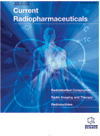
Full text loading...
Evidence of inappropriate overuse and underuse of medical procedures has been documented in modern healthcare systems around the world. Excessive use of health services can contribute to a rapid increase in healthcare costs and harm the patient physically and psychologically; conversely, underuse can lead to the inability to provide effective treatments when clinically indicated.
The study's aim is twofold: a) to measure the appropriateness of PET prescription in a cohort of patients, offering empirical evidence of overuse of health care services; b) to evaluate how the overuse of PET could affect public health expenditure and, consequently, the system's financial sustainability.
In this observational study, we have analyzed prospectively and retrospectively health patient records who underwent 18F-FDG PET/TC scan at the Nuclear Medicine Department of the University Hospital Mater Domini in Catanzaro (Italy) from 29/09/2022 to 10/02/2023. Patients’ diagnostic questions have been defined as appropriate, not completely appropriate and completely inappropriate according to the 18F-FDG PET/CT recommendations defined by the “Conditions of Supply and Indications of Prescriptive Appropriateness of Italian NHS (National Health Systems)” published in the Official Gazette no. 15 of 20 January 2016 (Decree 9 December 2015) and by the AIMN (Italian Association of Nuclear Medicine) guidelines.
We gathered data from 500 oncological patients (242 males and 258 females). The results show that 423/500 of patients' prescriptions were appropriate, while 77/500 of patients' prescriptions were completely inappropriate (63/77) or not completely appropriate (14/77).
Analysis showed a not complete adherence to national guidelines and no shared decision-making approach.

Article metrics loading...

Full text loading...
References


Data & Media loading...
Supplements

